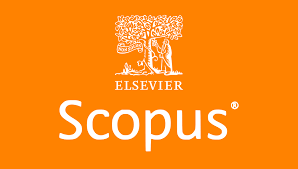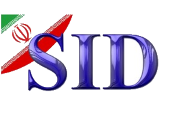








































2008-8787 :pISSN
2783-3534 :eISSN
Journal of food science and technology(Iran)
- Editor-in-Chief: Mohammad Hosein Azizi
- Manager-in-Charge: Iraj Sharifi Al Agha
- Publisher: Tarbiat Modares University and Association of Food Scientists and Technologists of Iran (AFSTI)
- Journal Type: Scientific
- Publication Period: Monthly
- Access Policy: Open
- Publication Format: Electronic
The scientific quality of allpapers submitted for the journal initially assessed by the editor for suitability for the journal. Papers deemed suitable are then typically sent to at least two independent expert reviewers to assess the scientific quality of the paper in double blind style. The Editor is responsible for the final decision regarding acceptance or rejection of articles.
The authors at the same time as submitting their article, sign a letter of commitment, according to which they transfer all material and intellectual rights to publish the article to the Iranian Journal of Food Science and Technology, and after the publication, the copyright authorization, will be transfer to the journal.
The main language of the journal is Persian, but articles can also be submitted in English. English articles will be published in a separate issue after reviewing and acceptance. For more information, read the authors' guide.
The admission process until the publication of the article(
-
Monitoring the physicochemical changes of eggs coated with active nanocomposite incorporating garlic extract (Allium sativum L.) during storage
-
Comparison between different techniques for extracting rosemary extract: solvent, extraction method, particle size, plant to solvent ratio
-
Evaluation of supercritical CO2 extraction on color stability and antioxidant activity of nanoencapsulated anthocyanin extract of pomegranate peel powder
-
Evaluation of the physicochemical, and mechanical properties of the edible film prepared from soy protein isolate containing the essential oil of the Ziziphorpa capitata
-
The Study of Kinetics of Polyphenol Oxidase Inactivation in Carrot Juice by Ohmic Heating
-
Investigating the effect of nanoliposomes containing yarrow (Achillea millefolium) antioxidant extract on oxidative properties and fatty acid profile of sesame oil
-
Investigating the effect of chitosan-chia seed gum coating on some chemical, microbial and sensory properties of Phytophagous fish (Hypophthalmichthys molitrix) during storage at refrigerator temperature
Mehrnoush Ebrahim Valandani, maryam Yousefpour, Mahshid Shamloofar, SHADI MAHDIKHANI
-
Investigating the Functional properties of encapsulated phenolic compounds of Iranian pomegranate peel
-
Comparing the effects of hydrothermal and microwave processes on the physicochemical Properties of rice bran
-
Determination of technological, sensory and nutritional properties of instant porridge based on composite flour almond oil cake- oatmeal and grape syrup powder
-
Investigating the effect of essential oils of Ferulago contracta , Rosmarinus officinalis and Lavandula officinalis plants on the thermal stability of camellia oil under accelerated conditions
leila keivanfar, leila Nateghi, Ladan Rashidi, Rezvan Pourahmad, hamid Rashidi nodeh
-
nano encapsulation of curcumin in mung bean protein isolate-maltodextrin conjugate, estimation of physicochemical and release properties
Somayeh Aziznia, Gholamreza Askari, Zahra emamdjomeh, maryam salami
-
Investigating the nutritional, technological and sensory properties of compact food bar containing raw and processed quinoa
Atoosa Nowrouzian, Masoomeh Mehraban sangatash, bahareh sahraiyan
-
The viability of Lactiplantibacillus pentosus v390 under acidic and bile conditions, and evaluation of its antimicrobial activity and safety
-
Effect of post-harvest salicylic acid treatment on storage life and quality of Cornelian cherry (Cornus mas L) fruit
Shiva Ghasemi, Mostafa Ghasemi, Mohammad ali Nejatian, Majid Golmohammadi
-
Antimicrobial edible films for food packaging
-
Increase the survival of Lactobacillus acidophilus and improved quality properties of senbiotic yogurt using apple and wheat fibers
-
بررسی اثر عصاره آبی برگ زیتون بر پایداری حرارتی روغن کانولا
-
Application of active packaging in foods - A review
-
Review on lycopene characteristics and role of microorganisms on its production
-
Heavy Metals Concentrations on Drinking Water in Different Aeras of Tehran as ppb and Methods of Remal Them
-
Applications of edible film in food
-
بررسی جایگزینی سوربات ها با پلی اول ها و تاثیر بر روی خواص فیزیکوشیمیایی ، میکروبی و بافتی کیک مافین
-
Optimization of Pizza Processed Cheese Formulation using Constrained Mixture Design
-
Determination of physicochemical characteristics and best harvesting time of fruits to meet processing purposes
-
Investigating the feasibility of mango pastille formulation with Spirulina platensis algae powder and natural honey sweetener
-
Using surface plasmon resonance technology for initial evaluation of the antitoxin activity of dextran exopolysaccharide against Escherichia coli heat-labile enterotoxin
Mojtaba Azari-Apar, Farideh Tabatabaei Yazdi, Pascal Degraeve, Nadia Oulahal, Kambiz Jahanbin
-
Using surface plasmon resonance technology for initial evaluation of the antitoxin activity of dextran exopolysaccharide against Escherichia coli heat-labile enterotoxin
Mojtaba Azari-Apar, Farideh Tabatabaei Yazdi, Pascal Degraeve, Nadia Oulahal, Kambiz Jahanbin
-
Using surface plasmon resonance technology for initial evaluation of the antitoxin activity of dextran exopolysaccharide against Escherichia coli heat-labile enterotoxin
Mojtaba Azari-Apar, Farideh Tabatabaei Yazdi, Pascal Degraeve, Nadia Oulahal, Kambiz Jahanbin
-
The effect of biopolymer coating on the antioxidant properties of nanoencapsulated sage extract to increase the stability of sunflower oil under accelerated temperature conditions
-
Study of the effect of asparaginase enzyme and toast of taftan bread on acrylamide
-
The effect of different foam mat drying methods on the properties of orange beverage powder prepared from permeate
Azita Nemati, Ali Motamedzadegan, Jafar Mohammadzadeh Milani
-
Optimization of Ultrasound-assisted Extraction of Fenugreek Seed Protein and Evaluation of Its Structural, Functional Properties and Antioxidant Activity
-
Investigating the Properties of Low-Fat Yogurt Produced by Ginger Extract (Zingiber Officinale)
Sina Moulaei, zahra latifi, Maryam Sabet Ghadam, Maryam Khosrojerdi, Elaheh Razghandi
-
Study of survival of probiotic strains of Lactobacillus acidophilus, Bifidobacterium and Streptococcus thermophilus and their effect on sensory properties of probiotic dark chocolate during storage at room temperature and refrigerated for 180 days








.png)

.png)







